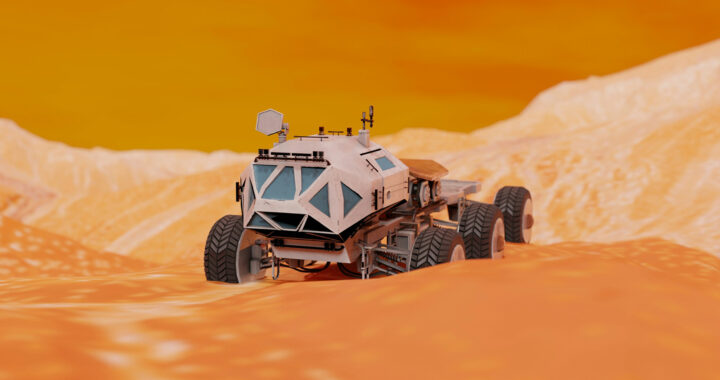Rovers from NASA have repeatedly faced snags when traversing extraterrestrial surfaces. One notable incident was the 2009 entrapment of the Spirit rover on Martian soil. Unexpected mobility failures continue to occur on Mars and the Moon despite extensive Earth-based testing. A research headed by mechanical engineering professor Dan Negrut has revealed the underlying reason for these persistent problems. The findings are detailed in a paper published on 27 May 2025 in the Journal of Field Robotics.
Engineers Explain Why NASA Rovers Keep Getting Stuck on Extraterrestrial Terrain
Gravity and Soil
The research specifically revealed that usual rover testing methods overlook a crucial factor: the effect of reduced gravity on the mechanical properties of soil. Testing typically accommodates for the mass of the rover to simulate lower gravitational forces, but does not replicate how weaker gravity changes soil compaction, stability, and resistance. This oversight can make rovers seem more capable than they actually are.
Specifically, under the stronger gravity of Earth, granular soils such as sand or simulated regolith are compressed more tightly, increasing their shear strength and load-bearing capacity. Soils are less compacted and more prone to yielding in the one-sixth gravity of the Moon and one-third gravity of Mars. This difference means rover wheels tend to sink deeper and slip more easily than predictions by Earth-based tests.
The team used advanced physics-based simulation through the Project Chrono platform to model rover and soil interactions under varying gravity levels. They simulated scenarios for the upcoming VIPER lunar rover of NASA and validated findings using physical data from the Simulated Lunar Operations Laboratory of NASA Glenn Research Center to confirm the mismatch between Earth testing and low-gravity performance.
Recommendations
Hence, by showing how gravity alters soil behavior, the study provides a plausible explanation for past rover immobilizations and ineffective remote recovery attempts. The engineers recommend revising rover testing protocols to include the particular influence of gravity on soil mechanics. These improvements could reduce the risk of costly and mission-threatening mobility failures during planetary exploration.
The team suggests combining physics-grounded simulations with improved soil simulants and scaling laws to more accurately represent extraterrestrial terrain. Future testing could integrate specialized rigs, parabolic flight experiments, and refined computer models to better predict rover mobility in alien environments. These steps could help ensure rovers avoid becoming stranded millions of kilometers from Earth.
Historical records show that mobility problems have occurred even with significant preparation. Spirit became trapped in soft Martian soil for months before its mission ended, while Opportunity narrowly avoided a similar fate. More recently, the Perseverance team of NASA has been cautious about sandy patches in Jezero Crater on Mars. This illustrates the ongoing challenge and concerns despite technological advances.
Future Implications
Negrut and his team emphasized that the discrepancy is not limited to NASA missions. Any planetary exploration vehicle, including those from the European Space Agency, China National Space Administration, and even private companies, faces the same hazard if testing and simulations fail to reflect actual surface conditions. This insight has economic relevance for future Moon, Mars, and asteroid exploration programs.
Another outcome of the research is the potential to improve autonomous navigation systems using artificial intelligence models trained on better data. If mobility predictions are more accurate, rover software can make better path-planning decisions, avoiding high-risk terrain altogether. This could reduce reliance on manual intervention from Earth, which is often delayed by communication lags lasting several minutes or more.
The study also suggests potential benefits for future human missions. Crewed lunar or Martian vehicles could encounter similar mobility risks or actual ussies when traversing soft soils under reduced gravity. Nevertheless, by incorporating gravity-aware soil modelling into vehicle design, engineers can develop more reliable systems, thus ensuring that astronauts can complete their tasks and return safely to base stations.
FURTHER READING AND REFERENCE
- Hu, W., Li, P., Rogg, A., Schepelmann, A., Chandler, S., Kamrin, K., and Negrut, D. 2025. “A Study Demonstrating That Using Gravitational Offset to Prepare Extraterrestrial Mobility Missions Is Misleading.” Journal of Field Robotics. DOI: 1002/rob.22597
